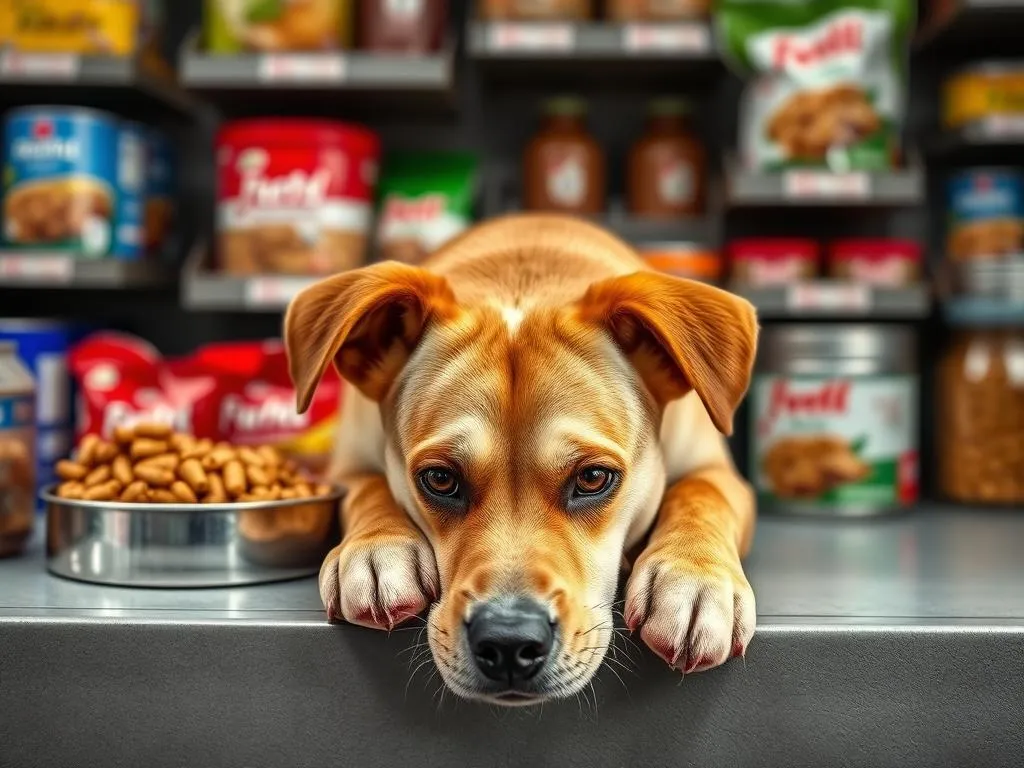
Introduction
Proper dog nutrition is essential for the health and well-being of our furry friends. Among the various options available to dog owners, wet dog food has gained popularity due to its palatable taste and rich nutritional content. However, how to store wet dog food is a crucial aspect that many pet owners overlook. Proper storage not only ensures that the food remains fresh but also helps prevent spoilage, which can be detrimental to your dog’s health. In this article, we will explore the ins and outs of wet dog food, its benefits, potential drawbacks, and, most importantly, effective storage methods to keep your dog’s meals safe and nutritious.
Understanding Wet Dog Food
Definition of Wet Dog Food
Wet dog food, often found in cans or pouches, is a moisture-rich diet formulated to meet the nutritional requirements of dogs. Unlike dry kibble, wet food contains a higher percentage of water, typically around 75-80%. Common ingredients in wet dog food include meat, meat by-products, grains, vegetables, and essential vitamins and minerals. This combination creates a balanced meal that caters to various dietary needs, making it an appealing choice for many dog owners.
Benefits of Wet Dog Food
The benefits of wet dog food are numerous:
- Nutritional Advantages: Wet dog food often contains higher protein levels and fewer carbohydrates compared to dry kibble, making it a great option for active dogs or those needing weight management. Additionally, the moisture content helps enhance the overall digestibility of the food.
- Palatability and Hydration: The rich aroma and taste of wet dog food make it highly palatable, even for picky eaters. The high water content also aids in keeping your dog hydrated, which is particularly beneficial for dogs that may not drink enough water.
- Ideal for Specific Breeds or Health Conditions: Wet food can be particularly suitable for certain breeds or dogs with specific health concerns, such as those with dental issues, senior dogs, or dogs recovering from surgery, as it is easier to chew and digest.
Potential Drawbacks
While wet dog food has many advantages, there are some potential drawbacks to consider:
- Cost Considerations: Wet dog food can be more expensive than dry kibble, making it less feasible for some pet owners who need to consider their budget.
- Spoilage and Waste Issues: Once opened, wet dog food can spoil quickly if not stored properly, leading to wasted food and money. Additionally, the higher moisture content can encourage bacterial growth if not handled correctly.
Proper Storage of Wet Dog Food
Before Opening
Proper storage of wet dog food begins even before you open it. Here are some tips to ensure optimal storage conditions:
- Choosing the Right Storage Location: Store canned or pouch wet dog food in a cool, dry place away from direct sunlight. A pantry or cupboard is ideal.
- Ideal Temperature and Environment: Keep the storage environment at a stable temperature, ideally between 50°F and 70°F (10°C to 21°C), to prevent spoilage and maintain the integrity of the food.
After Opening
Once you have opened a can or pouch of wet dog food, the storage methods become critical:
- Importance of Refrigeration: After opening, wet dog food should be refrigerated immediately to slow down spoilage. Leaving it at room temperature can lead to bacterial growth and foodborne illnesses in your dog.
- Recommended Duration for Safe Consumption: Typically, opened wet dog food can be safely stored in the refrigerator for about 3 to 5 days. Always check for any signs of spoilage before feeding it to your dog.
- Best Practices for Sealing and Covering Containers: Use airtight containers to store leftover wet dog food. If you prefer to keep it in the original can, cover it with plastic wrap or a can cover to minimize exposure to air and moisture.
Portioning and Serving
Portion control is essential when feeding your dog wet food:
- Tips for Portion Control: Measure out the appropriate serving size based on your dog’s weight and dietary needs. Consult your veterinarian for specific recommendations.
- Safe Methods for Reheating Wet Dog Food: If your dog prefers warm food, you can heat it gently in the microwave. However, ensure it is not too hot before serving, as dogs can be sensitive to temperature.
- Understanding Signs of Spoilage: Be vigilant for any signs of spoilage, such as an off smell, discoloration, or mold growth. If you notice any of these signs, it’s best to discard the food.
Common Mistakes in Storing Wet Dog Food
Leaving Food at Room Temperature
One of the most common mistakes pet owners make is leaving wet dog food at room temperature:
- Risks of Bacterial Growth: When wet food is left out for too long, it becomes a breeding ground for bacteria, which can lead to foodborne illnesses in dogs.
- How Long is Too Long?: As a general rule, wet dog food should not be left out for more than two hours. If your dog hasn’t eaten within that time frame, discard any uneaten food.
Using Inappropriate Containers
Another mistake is using unsuitable containers for storage:
- Best Types of Containers for Storage: Ideally, use glass or stainless steel containers that can be sealed tightly. These materials prevent chemical leaching and contamination.
- Avoiding Plastic Containers with Harmful Chemicals: Many plastic containers can contain BPA or other harmful chemicals that can leach into the food. Opt for high-quality, food-safe plastic if you need to use plastic containers.
Ignoring Expiration Dates
Ignoring expiration dates can have dire consequences:
- Importance of Checking Expiration Dates: Always check the expiration date on wet dog food cans or pouches before purchasing and before feeding it to your dog.
- How to Properly Dispose of Expired Food: If you find expired food in your pantry, dispose of it safely. You can either throw it in the trash or compost it if the ingredients are suitable for composting.
Alternative Storage Solutions
Vacuum Sealing
Vacuum sealing can be a game-changer for storage:
- Benefits of Vacuum Sealing Wet Dog Food: Vacuum sealing removes air, which helps prolong the freshness and shelf life of wet dog food. It also minimizes the chances of freezer burn if you choose to freeze it.
- Step-by-Step Guide on How to Vacuum Seal:
- Portion the wet dog food into individual servings.
- Place the portion into vacuum-seal bags.
- Use a vacuum sealer to remove air and seal the bag.
- Label the bags with the date and type of food before storing them in the refrigerator or freezer.
Freezing Wet Dog Food
Freezing wet dog food is another effective storage method:
- Safety of Freezing Wet Dog Food: Freezing can safely preserve wet dog food for several months, but it’s essential to follow proper procedures.
- Best Practices for Freezing and Thawing: Portion the food into smaller, manageable servings before freezing. When ready to use, thaw the food in the refrigerator overnight and ensure it is completely thawed before serving.
Using Dog Food Storage Bins
Investing in a quality storage bin can be beneficial:
- Features to Look for in Dog Food Storage Bins: Choose bins made of food-safe materials, airtight seals, and a sturdy design that prevents pests and moisture from entering.
- Recommended Products and Brands: Some popular dog food storage brands include IRIS, Gamma2, and PetFusion, all known for their durability and effectiveness in keeping dog food fresh.
Frequently Asked Questions (FAQs)
How long does wet dog food last once opened?
Once opened, wet dog food typically lasts for 3 to 5 days in the refrigerator. Always check for signs of spoilage before serving.
Can I mix wet dog food with dry food?
Yes, mixing wet and dry dog food can provide a balanced diet and enhance palatability. Make sure to adjust the portions accordingly.
Is it safe to feed my dog expired wet food?
Feeding expired wet dog food is not recommended, as it may pose health risks. Always check expiration dates and dispose of expired food properly.
What are the signs that wet dog food has gone bad?
Signs of spoilage include an off smell, discoloration, mold growth, or an unusual texture. If you notice any of these signs, discard the food immediately.
Conclusion
In conclusion, understanding how to store wet dog food properly is crucial for ensuring your dog’s health and nutrition. From choosing the right storage containers to being mindful of expiration dates, each step contributes to maintaining the quality of your dog’s food. By following the tips outlined in this article, you can ensure that your furry friend enjoys their meals safely and healthily. Always remember to consult your veterinarian for personalized advice tailored to your dog’s specific nutritional needs.









